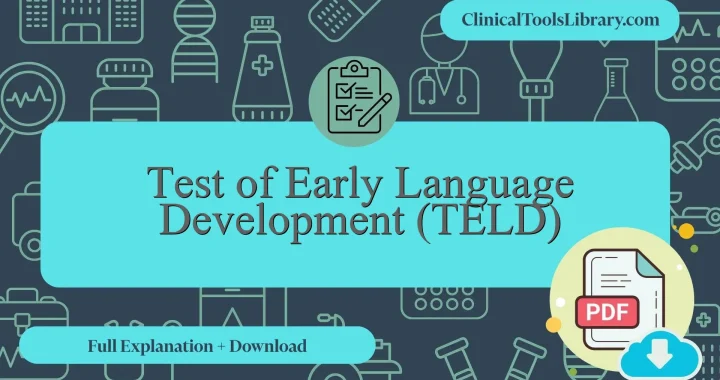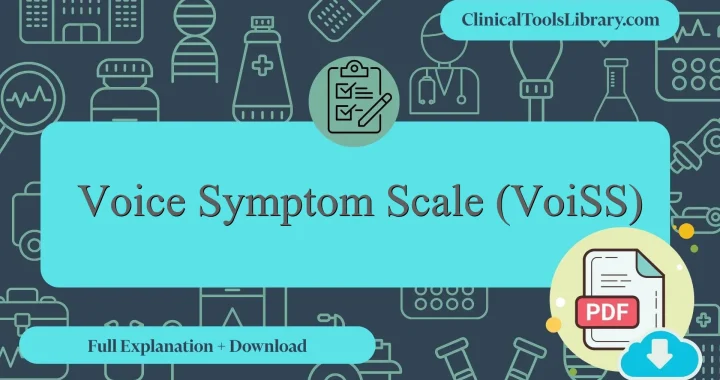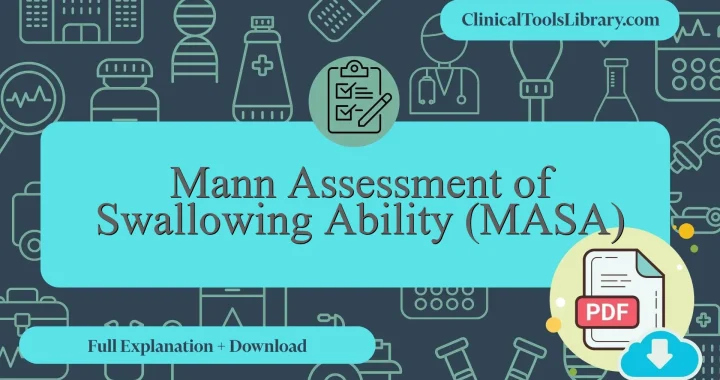In this article, we explain everything you need to know about the Arizona Articulation Proficiency Scale (AAPS). We will cover the aspects it evaluates, the target population, a detailed step-by-step explanation, and how to interpret its results. Additionally, we will dive into the scientific evidence supporting this tool (diagnostic sensitivity and specificity) in clinical assessment. You will also find official and unofficial sources available for download in PDF format.
What does the Arizona Articulation Proficiency Scale (AAPS) assess?
The Arizona Articulation Proficiency Scale (AAPS) assesses an individual’s ability to produce speech sounds accurately across various word positions. Its primary purpose is to identify and quantify articulation errors that may indicate the presence of speech sound disorders, facilitating targeted intervention. The AAPS evaluates consonant and vowel production through standardized testing, providing clinicians with reliable data to guide diagnosis and treatment planning within pediatric and adult populations with suspected communication impairments.
For which type of patients or populations is the Arizona Articulation Proficiency Scale (AAPS) intended?
The Arizona Articulation Proficiency Scale (AAPS) is primarily indicated for use with children aged 0 to 5 years who are suspected of having articulation disorders or delays in speech sound development. This assessment tool is especially useful in early childhood clinical settings to identify inadequate production of phonemes, enabling timely intervention strategies. The AAPS facilitates differentiation between typical misarticulations and patterns suggestive of underlying phonological impairments, making it valuable for speech-language pathologists working with pediatric populations exhibiting delayed speech intelligibility or suspected speech sound disorders.
Step-by-Step Explanation of the Arizona Articulation Proficiency Scale (AAPS)
The Arizona Articulation Proficiency Scale (AAPS) consists of 125 items designed to assess articulation skills in individuals aged 18 months to 18 years. The clinician begins by administering the test in a quiet environment, presenting pictures that correspond to each target word. The items include consonant-vowel-consonant (CVC) structures and multisyllabic words to evaluate a range of phonemes. Responses are recorded in terms of correct or incorrect production, with the option for the examiner to note distortions, substitutions, or omissions. Scoring follows a standardized format, where each correct articulation receives one point, allowing for objective quantification of speech sound proficiency. The scale’s design facilitates identification of deviations related to speech sound disorders, integrating both spontaneous and imitative responses to ensure comprehensive assessment.
Arizona Articulation Proficiency Scale (AAPS) PDF Resources for Clinicians and Educators
Downloadable resources for the Arizona Articulation Proficiency Scale (AAPS) are available below in PDF format, including both the original and the English versions. These materials are essential for clinicians and educators seeking standardized tools to assess speech articulation proficiency accurately. Providing access to multiple language versions ensures consistency in evaluation across diverse populations and enhances the reliability of diagnostic outcomes.
How to interpret the results of the Arizona Articulation Proficiency Scale (AAPS)?
The Arizona Articulation Proficiency Scale (AAPS) test results are interpreted by comparing the obtained score against established reference ranges that vary by age and linguistic background. A score falling below the 10th percentile typically indicates articulation disorders requiring further evaluation or intervention. Healthcare professionals apply the formula Percentile Rank = (Number of scores below the raw score ÷ Total number of scores) × 100 to contextualize the patient’s performance within normative data. For instance, a raw score of 18 in a normative sample of 50 participants, where 40 scored lower, yields a percentile rank of 80%, signifying strong articulation proficiency. Practically, these results guide clinicians in diagnosing speech sound disorders and tailoring individualized treatment plans to enhance communication effectiveness and improve patient outcomes.
What scientific evidence supports the Arizona Articulation Proficiency Scale (AAPS) ?
The Arizona Articulation Proficiency Scale (AAPS) was developed in the early 1970s by Johnson and Moore to provide a standardized measure of articulation skills in children aged 1 through 12 years. Validation studies conducted subsequently have demonstrated high inter-rater reliability and strong construct validity, with normative data derived from a representative sample of over 1,200 children across diverse demographics. The scale’s sensitivity in detecting speech sound disorders, including phonological disorders and apraxia of speech, has been supported by comparative analyses showing concordance with other established assessments such as the Goldman-Fristoe Test of Articulation. Longitudinal research indicates that AAPS scores correlate significantly with later language development outcomes, reinforcing its utility as a reliable tool in early speech pathology diagnostics.
Diagnostic Accuracy: Sensitivity and Specificity of the Arizona Articulation Proficiency Scale (AAPS)
The Arizona Articulation Proficiency Scale (AAPS) demonstrates variable sensitivity and specificity depending on the population studied and the diagnostic criteria employed. Research indicates that the AAPS exhibits a sensitivity ranging from approximately 85% to 92%, reflecting its efficacy in correctly identifying individuals with articulation disorders. Specificity values generally range between 80% and 88%, indicating a moderate to high capacity to exclude individuals without speech impairments. These metrics underscore the scale’s reliability as a screening tool in clinical settings, particularly for detecting speech sound disorders in pediatric populations. However, clinicians are advised to interpret results in conjunction with comprehensive assessments to ensure accurate diagnosis.
Related Scales or Questionnaires
The Arizona Articulation Proficiency Scale (AAPS) shares similarities with other articulation assessments such as the Goldman-Fristoe Test of Articulation, the Fisher-Logemann Test of Articulation Competence, and the Clinical Assessment of Articulation and Phonology (CAAP). Each tool is designed to evaluate speech sound production, yet they differ in administration time, age range suitability, and normative data robustness. For instance, the Goldman-Fristoe provides comprehensive phoneme-level analysis with extensive normative data but requires more administration time compared to the AAPS. The Fisher-Logemann offers in-depth phonetic analysis beneficial in complex cases of speech sound disorders, though it is less commonly used due to its length and complexity. The CAAP integrates articulation and phonological processes, advantageous for differential diagnosis but may be less sensitive in detecting subtle articulatory errors. These scales and questionnaires are thoroughly explained and available for download on ClinicalToolsLibrary.com, facilitating clinician access to validated tools essential for managing speech and language disorders.




